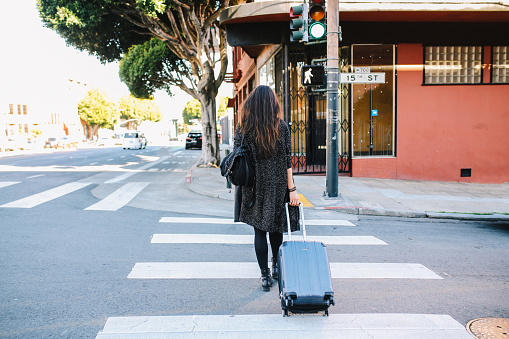California Fatal Pedestrian Accident Rate Spikes in 2021

A personal injury attorney in the Bay Area discusses the problem
The 10-year trend of increasing fatal pedestrian accidents is now skyrocketing. In the first quarter of 2021, the national deadly pedestrian accident rate shot up by more than 20%.
If you live in California, you may have already seen the signs or been personally affected by this worrisome trend. There are hundreds of pedestrian deaths in California every year. At 2.5 deaths per 100,000 people, California has the fifth-highest fatal pedestrian accident rate in the U.S.
There were 20 pedestrian fatalities in Contra Costa County in 2019, according to the latest U.S. Department of Transportation numbers. In the last several years, fatal pedestrian accidents in the Northeast Bay Area were reported in Antioch, Bay Point, Concord, Lafayette, Martinez, Pacheco, Pittsburg, and Pleasant Hill.
In an effort to combat the deadly trend, the Governors Highway Safety Administration is promoting the second annual "National Pedestrian Safety Month" this October. As part of the awareness campaign, the group is sharing news about excellent state and local pedestrian safety improvement programs.
Two California programs the GHSA says are exemplary are "Traffic Safety Superheroes" and the Go Human Bicycle/Pedestrian Safety Program in southern California.
The superheroes campaign is a California Office of Traffic Safety initiative where children dress up as their favorite superheroes and participate in safety-related activities. The Go Human program seeks to stop pedestrian accidents through outreach and education campaigns as well as safety demonstration projects.
California pedestrian accidents and safety
California is doing far more than just the two programs mentioned above.
In 2008, the state's Complete Streets Act was signed into law. It requires cities and counties to consider all users of city-and county-owned roads when they update their general transportation plans. California's Department of Transportation signed on soon after, pledging to give consideration to motorists as well as other users when designing, reconstructing, and building roadways.
Complete Street advocates say the law has not led to enough change. Too often, they say, city planners and engineers will consider but ultimately reject safety features. In 2019, legislation was filed to require cities and counties to include protection measures for vulnerable street users in roadway design, reconstruction, and construction.
Meanwhile, more than 100 Complete Street policies have been adopted by large municipalities like Los Angeles and small towns in the San Francisco Bay Area.
Driving the fatal crash trend
Complete Street plans seek to address situations that lead to pedestrian, bicycle, and other accidents between vehicles and non-motorists. Studies point to multiple factors driving the hike in pedestrian deaths. The causes range from changes in new motor vehicle designs to 1950s engineering.
Underlying reasons for the spike include:
- Roadway design. The U.S. has historically built its streets to accommodate motor vehicles and relieve traffic congestion. Considerations for walkers and bicyclists are lacking.
- SUVs. Every year it seems there are more and more sports utility vehicles (SUVs) on the road. Due to their size and weight, SUVs often cause more severe damage than smaller, lighter sedans. The vehicles also have elevated drivers' seats compared to cars. The height can make it more difficult to notice pedestrians.
- Gaps in crosswalk availability. When crosswalks are too far apart to be convenient, people are more likely to cross the road outside of marked safety zones, thus increasing the risk of a bad accident.
- Lacking light. Areas that are poorly lit can make it difficult for drivers to see pedestrians at night and in bad weather.
- Crowding. Populations have grown, but streets, generally, have not.
- Speeding. High speeds along roadways regularly used by people on foot or bicycle heighten the risk for a crash.
Proposed Improvements
Smart Growth America, a national proponent of Complete Street designs, is proposing many ways to improve street safety. In their 2021 report, "Dangerous By Design," the groups suggests about a half dozen roadway improvements including:
- Lower speeds
- Narrower travel lanes that naturally slow traffic
- High-visibility, signalized crosswalks
- Decreasing the distance between crosswalks and intersections
- Eliminating right turn "slip" lanes
Legal help is available for injured pedestrians
Pedestrian accidents typically result in severe and often fatal injuries to the victim. Getting hit by a car can lead to life-altering injuries like spinal cord damage, broken bones, traumatic brain injuries (TBIs), and even death.
If you were injured or a loved one died after getting hit by a car, you need a pedestrian accident lawyer with the knowledge, experience, and resources to help you navigate the process of recovering your losses and hold the at-fault party accountable. Clancy & Diaz, LLP is a personal injury law firm with a reputation for getting accident victims in the Bay Area the money they need and deserve.
Contact us today for a free consultation with an experienced pedestrian accident attorney. Our law firm is based in Walnut Creek and Antioch, and we proudly serve clients throughout the Bay Area.
